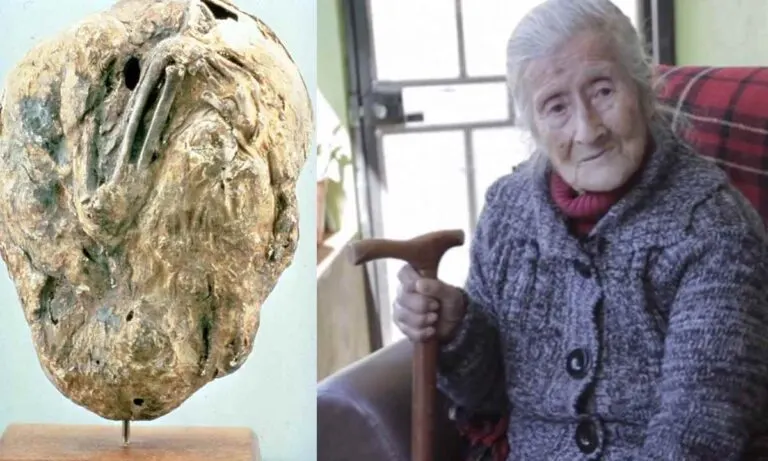The Oldest Known Briton “Cheddar Man” Has A Living Relative!
In 1903, researchers made an unexpected discovery while working on a drainage renovation in Gough’s Cave, part of the Cheddar Gorge in Somerset, UK. Researchers found a skeleton that was known as “Cheddar Man.” This ancient Homo sapien lived around 10,000 years ago and is one of the oldest modern humans discovered.
Cheddar Man’s story took an even more fascinating turn when it was revealed that one of his modern-day descendants. Surprisingly, the descendant lives less than a mile from the very cave where his remains were found. Let’s have a closer look at the findings.
Cheddar Man’s Physical Appearance and DNA Analysis
Cheddar Man was a Mesolithic hunter-gatherer who stood about 5 foot 5 inches tall. He has reportedly died in his twenties. Cheddar Man’s remains were found buried alone, which was unusual for the time when cave burials were common.
In 2018, scientists from the Natural History Museum in London extracted DNA from Cheddar Man’s inner ear bone. This DNA was analyzed by experts at University College London and Kennis & Kennis Reconstructions. This analysis led to a significant discovery about his physical appearance.

Contrary to previous depictions, Cheddar Man had light blue eyes and a dark complexion. Dr. Tom Booth, a researcher involved in the study, explained more about Cheddar Man’s features. He also discussed how these features challenge our modern expectations of how ancient populations looked.
“He is just one person, but also indicative of the population of Europe at the time. They had dark skin and most of them had pale colored eyes, either blue or green, and dark brown hair.”
Dr. Tom Booth
This research reveals that pale skin and blond hair did not appear in Europe until the arrival of farming. It is certainly much later than the appearance of pale eyes.
“He reminds us that you can’t make assumptions about what people looked like in the past based on what people look like in the present.”
Dr. Tom Booth emphasized.

A Living descendant was found half a mile away!
One of the most remarkable aspects of Cheddar Man’s story is the discovery of a living descendant. In 1997, DNA testing revealed that Adrian Targett, a local high school teacher, is a direct matrilineal descendant of Cheddar Man. Born close to (half a mile away) Cheddar Man’s final resting place, Targett still holds the record for the “farthest traced descendant by DNA.” This connection between ancient and modern Britons shows the deep-rooted genetic links that span thousands of years.

Historical and Cultural Context
Cheddar Man lived during the Mesolithic era, a time when England was a forested land connected to Europe. Hunter-gatherers like Cheddar Man were some of the first humans to settle in what would become Britain. Their way of life included hunting, gathering, and cave burials, as seen with Cheddar Man’s remains.
Understanding Cheddar Man and his contemporaries provides great insight into the migration patterns and population dynamics of early Europe. The DNA evidence shows that about 10% of modern Britons can trace their ancestry back to the same genetic population as Cheddar Man. This early population was largely replaced by later waves of migrant farmers. However, their legacy remains.

Scientific and Cultural Impact
The discovery and analysis of Cheddar Man have significant implications for our understanding of prehistoric populations in Europe. His dark skin and light eyes challenge stereotypes about ancient Britons. The features also offer a more complex picture of early human diversity. Ongoing research continues to mesmerize the public.
Dr. Tom Booth highlighted the importance of Cheddar Man’s story in shaping our understanding of human history.
“Cheddar Man subverts people’s expectations of what kinds of genetic traits go together.”
Dr. Tom Booth said.
This case reminds us that the genetic traits we see today are not fixed and have evolved over time.
Conclusion
The story of Cheddar Man is a testament to the enduring legacy of ancient humans. It also shows their impact on modern populations. His discovery not only enriches British history but also underscores the importance of genetic research in uncovering our past. Cheddar Man’s existence and the connection to his modern descendant, Adrian Targett, offer a unique glimpse into the lives of our ancient ancestors and their lasting influence on who we are today.
Also read,







